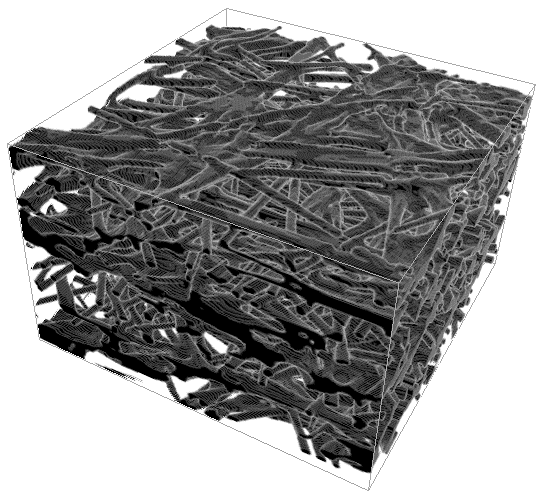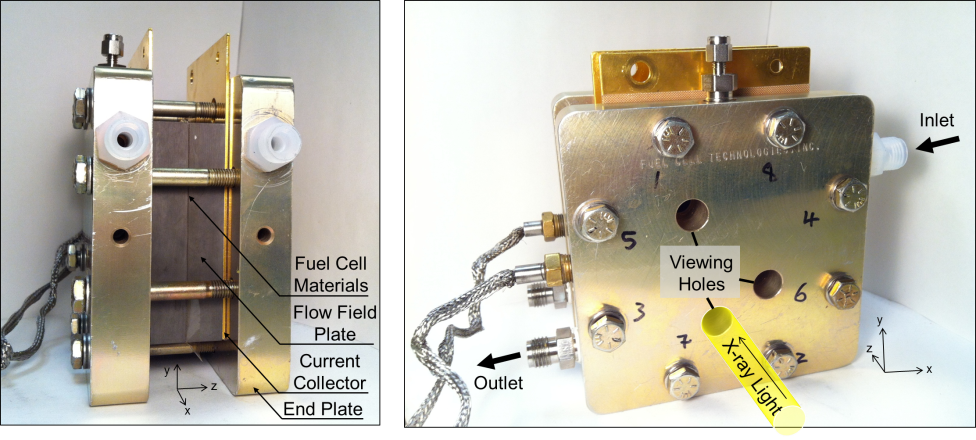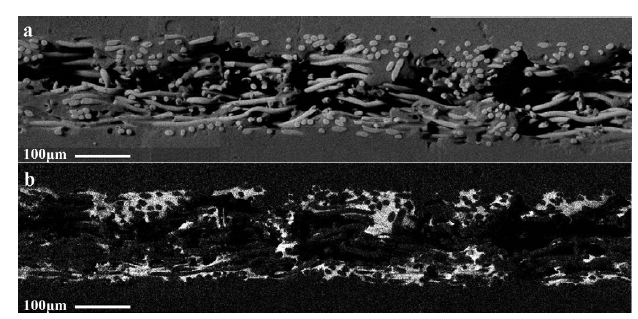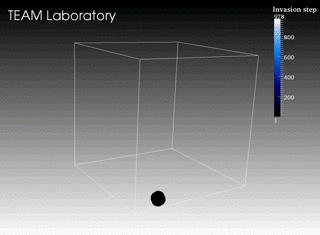Research
In the polymer electrolyte membrane (PEM) fuel cell, it is crucial for the gas diffusion layer (GDL) to remain free of water in order to provide a pathway for gaseous fuel transport. The GDL is a porous material composed of a dense array of carbon fibers, which also provides an electrically conductive pathway for current collection. The GDL must also provide a pathway for excess water removal. Excess water commonly leads to flooding, where liquid water accumulates in the GDL and gas channels resulting in fuel starvation. Although the GDL is commonly made hydrophobic to enhance water removal, in practice, flooding is still a major cause of PEM fuel cell performance degradation.

X-ray based visualizations
We use x-ray based visualization techniques, such as X-ray radiography and X-ray tomography, to peer into complex porous materials – something that would not otherwise be possible using conventional microscopy techniques. By using these cutting-edge visualization techniques, we are able to capture the multiscaled, complex features of porous materials for clean energy, for applications such as fuel cells and electrolyzers.

Synchrotron based visualizations
We visit synchrotron facilities around the world to perform state-of-the-art visualizations of static and dynamic behaviour of fuel cell materials and fuel cells in operation. We also use synchrotron light to understand the atomistic makeup of complex porous materials, and understanding that enables us to inform the design of new materials for next generation fuel cells, batteries, and electrolyzers.

Operando visualizations for clean power
We design, build, and test fuel cell and electrolyzer designs so that we can run experiments both in the lab and at the synchrotron – to evaluate both performance as well as the time-dependent behaviour of liquids and gases at the microscale. This detailed understanding of gas and liquid behaviour during operation provides powerful information that is used to validate our models. Our experiments combined with our custom models of heat and mass transport enable us to design new materials for the next generation of clean energy devices.

Porous media characterization and modelling
We have a suite of characterization and modelling techniques that we apply in order to understand the material composition and surface features of porous materials. With this information, we can provide accurate inputs into our numerical models, which we use to predict how gases, liquids, heat, and electrons move through the material. We then use these models to design new materials that are tailored for customized transport pathways for these gases, liquids, heat, and electrons. For clean energy devices, such as fuel cells, this means that we can design materials that will enable the production of cheaper and more reliable power.

Pore network modeling
OpenPNM is an open source pore network modeling package developed in collaboration with the Automotive Fuel Cell Cooperation and Prof. Gostick at McGill University, who is the lead developer. Together with our collaborators, we developed this package to provide the scientific and engineering community with a ready-made framework for performing pore network simulations that can be used to investigate the flows of liquids and gases in clean energy devices, such as fuel cells.

